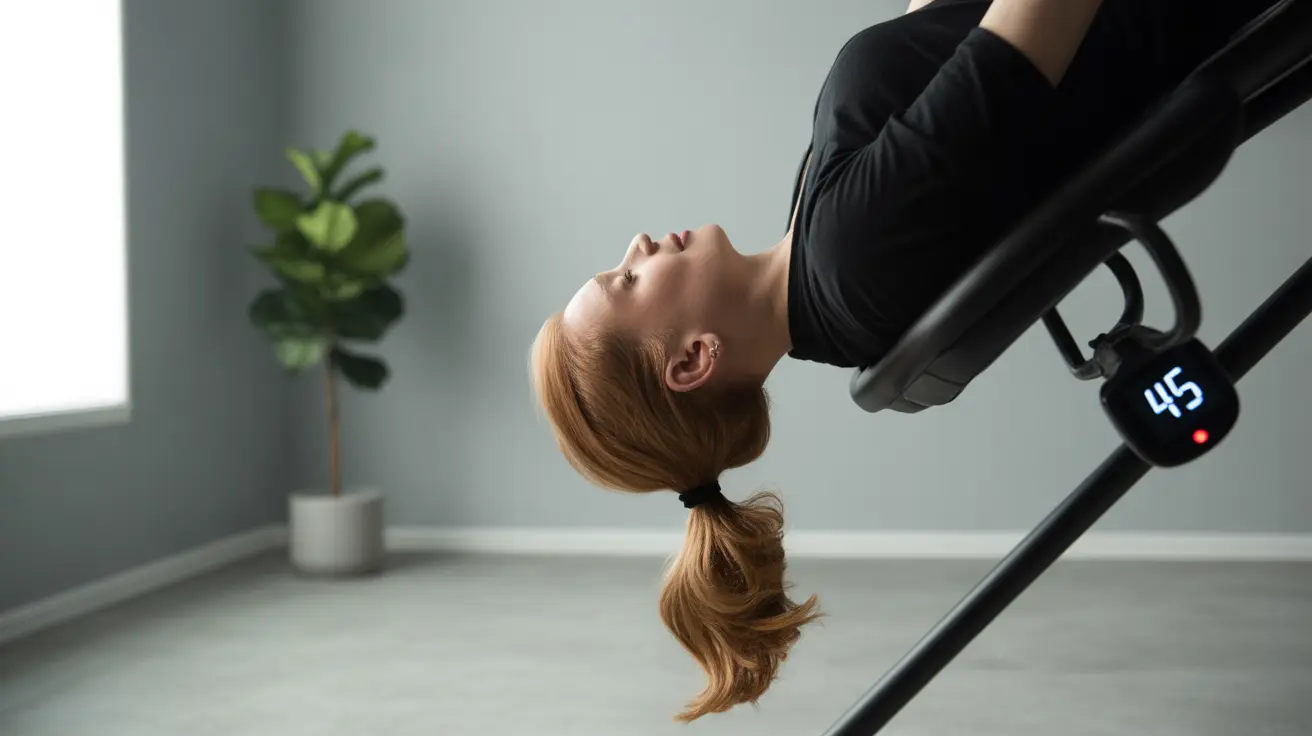Inversion therapy has gained attention as a non-invasive approach to managing back pain and improving spinal health. This therapeutic technique involves hanging upside down or at an inverted angle to temporarily decompress the spine and potentially alleviate various back-related issues.
Understanding both the advantages and potential risks of inversion therapy is crucial for anyone considering this treatment option. Let's explore how this therapy works, who might benefit from it, and important safety considerations to keep in mind.
How Inversion Therapy Works
Inversion therapy operates on a simple principle: using gravity to create temporary spinal decompression. When you're inverted, the natural gravitational pull works in reverse, potentially helping to:
- Increase space between vertebrae
- Reduce pressure on spinal discs
- Stretch back muscles and ligaments
- Improve spinal alignment
Most people use specialized equipment like inversion tables or gravity boots to achieve the inverted position safely and comfortably.
Potential Benefits of Inversion Therapy
Research suggests that inversion therapy may offer several therapeutic benefits when used appropriately:
- Temporary relief from chronic back pain
- Improved spinal flexibility
- Enhanced circulation to back muscles
- Reduced muscle tension
- Possible sciatica symptom relief
However, it's important to note that these benefits can vary significantly from person to person, and scientific evidence supporting long-term effectiveness is still limited.
Safety Considerations and Contraindications
While inversion therapy can be beneficial for some, it's not suitable for everyone. Several health conditions make this therapy potentially dangerous:
- High blood pressure
- Heart disease
- Glaucoma
- Pregnancy
- Recent bone fractures
- Inner ear problems
- Obesity
- Retinal detachment
Always consult with a healthcare provider before starting inversion therapy, especially if you have any pre-existing medical conditions.
Proper Usage Guidelines
To maximize benefits and minimize risks, follow these essential guidelines:
Starting Slowly
Begin with minimal inversion angles (15-20 degrees) for short periods (1-2 minutes). Gradually increase both angle and duration as your body adapts to the therapy.
Proper Equipment Setup
Ensure your inversion table is properly assembled and adjusted to your height and weight. Check all safety features before each use.
Monitoring Your Response
Pay attention to how your body responds during and after sessions. Stop immediately if you experience:
- Headaches
- Dizziness
- Increased pain
- Vision changes
- Nausea
Alternative Approaches to Back Pain Relief
If inversion therapy isn't suitable for you, consider these alternative options:
- Physical therapy exercises
- Gentle yoga or stretching
- Swimming or water therapy
- Chiropractic care
- Massage therapy
- Core strengthening exercises
Frequently Asked Questions
What are the benefits and risks of inversion therapy for back pain relief?
The benefits include temporary spine decompression, potential pain relief, and improved flexibility. Risks include increased blood pressure, headaches, and possible complications for those with certain health conditions. The therapy should be approached cautiously and under medical supervision.
What health conditions make inversion therapy unsafe or contraindicated?
Inversion therapy is unsafe for people with high blood pressure, heart disease, glaucoma, pregnancy, recent fractures, inner ear problems, obesity, and retinal conditions. These conditions can be exacerbated by the inverted position.
How should I properly use an inversion table to minimize side effects?
Start with gentle angles (15-20 degrees) for 1-2 minutes, gradually increasing time and angle as tolerated. Always ensure proper equipment setup, never exceed your comfort level, and stop if you experience any adverse effects.
Can inversion therapy help prevent the need for back surgery, and what are the limitations of this approach?
While inversion therapy may help some people manage back pain and potentially delay or avoid surgery, it's not a guaranteed solution. Its effectiveness varies by individual and condition. It should be considered one tool among many for back pain management.
Are there safer alternatives to inversion tables for relieving lower back pain and improving flexibility?
Yes, safer alternatives include physical therapy, gentle yoga, swimming, water therapy, chiropractic care, and targeted stretching exercises. These options often carry fewer risks while providing similar benefits for many people.




